Looking for your next adventure? It starts here!
Join our women's adventure community for exclusive trips, partner benefits and inspirational articles delivered straight to your inbox.
For women who want to collect experiences, not things.
Book a TripOur Larger Trips
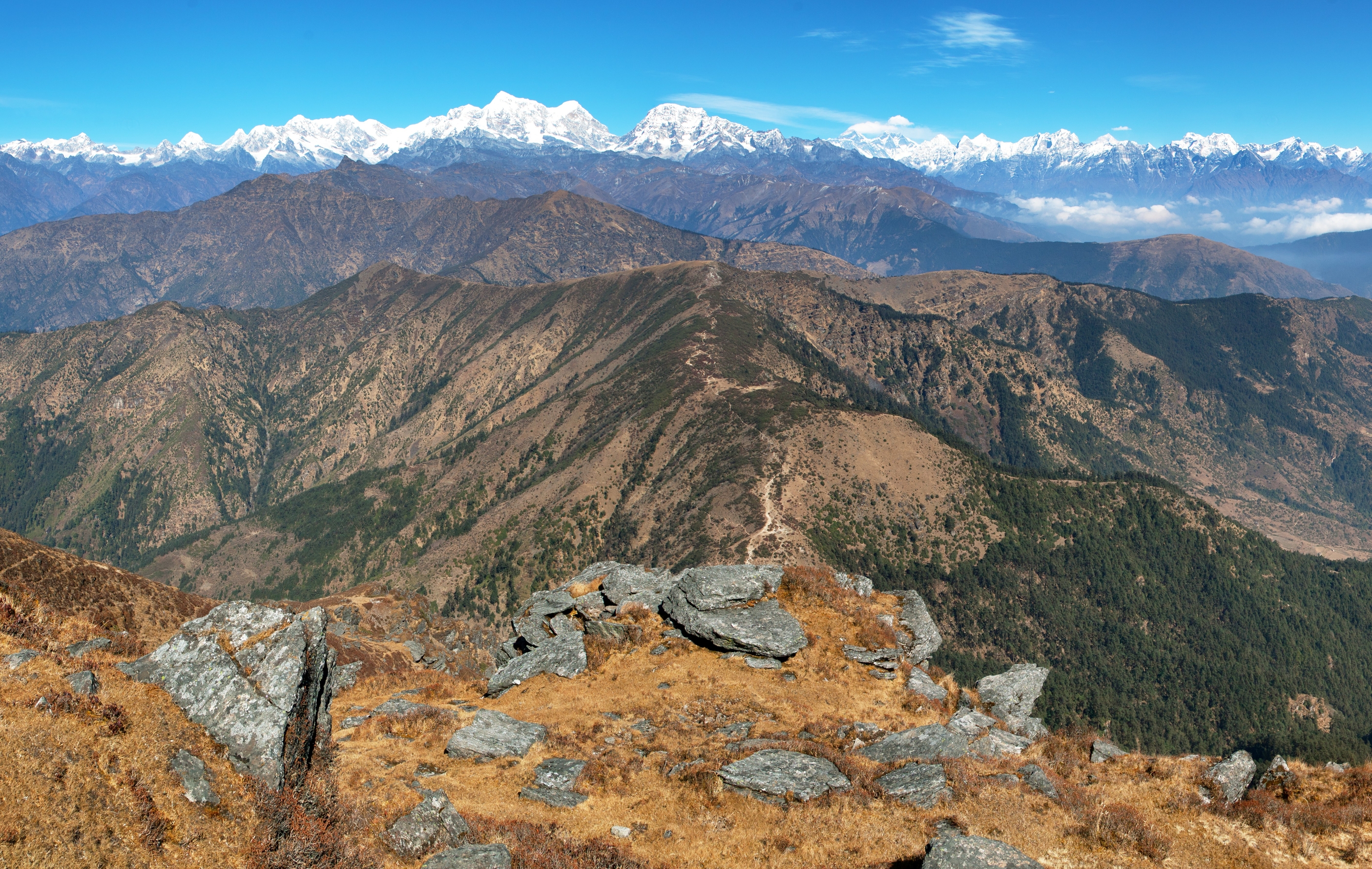
This stunning trek takes you on an exclusive, camping-style trek into the green foothills below the mighty Mount Everest. If this is your first time trekking in Nepal, this is a great opportunity to experience a moderate trek with spectacular views of the entire Himalayan range from east to west in Nepal. Though famous for offering the best view of Mount Everest (according to none other than the esteemed Sir Edmund Hillary himself), this off-the-beaten track route is little-used by trekkers, meaning you’ll have the trails to yourself, while nights will be spent in the comfort of our exclusive camp with incredible meals prepared by your guides.
AT A GLANCE
A compulsory pre-trekking briefing is held on day 2 of your trip at Kathmandu Guest House. Please see itinerary for further details.
The Lower Solu Khumbu Region is home to many endangered animals and birds like the elusive and mysterious snow leopard, the Himalayan thar, and many more – if you’re lucky, you may experience the chance to witness them as they move about in their natural environment. Throughout your 10-day journey, you’ll also encounter various local peoples and their villages, including the Sherpa, Rai, Chhetri, and Gurung people, making the Everest Foothills Camping Trek provides a sublime introduction to the culture and traditions of this remote and beautiful region.
* All prices are per person and listed in Australian Dollars (AUD). All prices shown are GST inclusive where applicable.
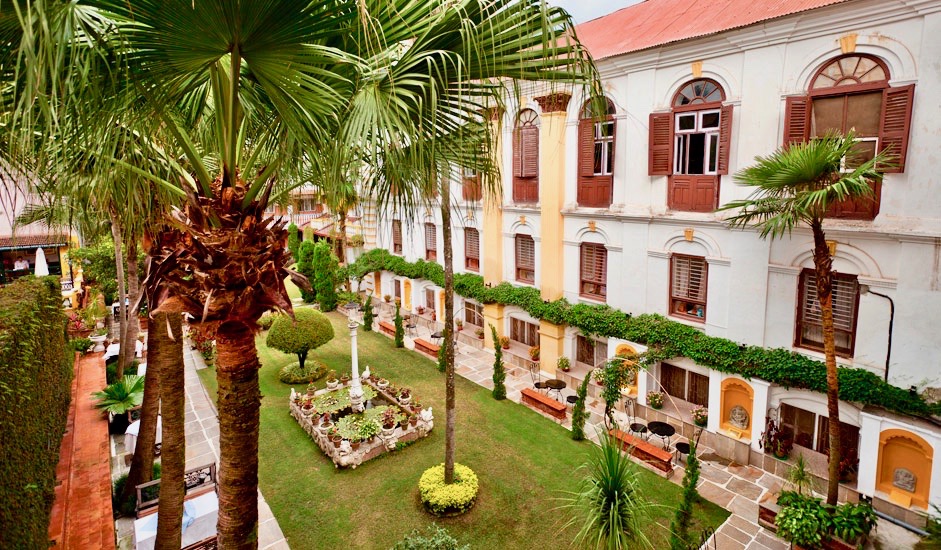
Upon arrival at Tribhuvan International Airport, one of our team will greet you and transfer you to The Kathmandu Guest House in Thamel by private vehicle. As you peer out the window, the bright sunshine will reveal the soaring range of Himalayan peaks to the north. At the hotel, you’ll enjoy an easy check-in process, and can let any tiredness from your flight melt away in the comfort of your private room.
Note: Airport pick-ups can be arranged within 3 days prior to the trip departure date. Clients must inform Women Want Adventure at least 4 weeks prior to departure with their flight arrival number and time. Please make your own way to the hotel outside this timeframe.
Included: Airport pick-up and 1-night’s accommodation in Kathmandu at Kathmandu Guest House (private room).

Kathmandu is a wonderful mix of the ancient alongside the modern. Crowded, busy streets, cars, motorbikes, and buses thread their way between ancient temples, crumbling shrines and modern offices, as picturesque palaces slowly sag into dereliction and Buddhist stupas gaze over the bustling scene with their all-seeing eyes. Although a crowded, noisy, and polluted city, it is also friendly, fascinating, and vibrant.
Today is free time for you to explore and enjoy sight-seeing in your own time. Join up with other women on the trip, or enjoy experiencing these sites individually.
If you’re looking to get the most from your time here, we recommend the following:
Pashupatinath – The largest Hindu Temple of Nepal, dedicated to the supreme Hindu God, Shiva, situated on the banks of the Bagmati River. At Pashupatinath, you’ll see exceptionally carved statues and idols of Hindu deities, as well as a long row of Shiva-Lingas. This complex of small temples – and the golden hood at the top of the main Temple – are truly fascinating. Moreover, you’ll get the opportunity to witness a Hindu death ritual at Pashupati Aryaghat – a unique cultural experience that will linger long in your memory.
Boudhanath – A site that holds huge religious significance among the Tibetan Buddhists of Nepal. A major shrine on the ancient Indo-China trade route, traders and scholars would visit Boudhanath seeking blessings for a safe journey through the high Himalayan passes to Tibet. Even today, saffron-robed monks practice daily circumambulations of Boudhanath, as colourful prayer flags touch the skyline from the dome pinnacle to the base of the large monument. The centre of Tibetan culture in Nepal, Boudhanath is a truly special place.
Durbar Square – Located before the old royal palace of the former Kathmandu Kingdom, the exemplary wooden and stone craftsmanship of this site makes it a prominent attraction. Stone-paved streets and pagoda-style religious monuments displaying different Hindu deities reveal the cultural delights and exquisite craftsmanship of ancient and medieval Nepal at Kathmandu Durbar Square.
Swayambhunath – High atop a hill in the Kathmandu Valley, the ancient religious complex of Swayambhunath is home to a stupa and various temples honouring the ‘Self-Created’ nature of the valley, over which the painted eyes of the Buddha maintain an eternal watch. As one of the oldest religious sites in Nepal and the second-most sacred site in Tibetan Buddhism after Boudhanath, you’ll get to experience an authentic taste of one of the world’s greatest, most beautiful faiths here at Swayambhunath.
In the evening, we’ll meet as a group at Kathmandu Guest House for our pre-trek briefing at 4pm with the Guiding Team. The briefing will be approximately 45 minutes in duration.
Included: Hotel in Kathmandu (private room) with breakfast, complimentary beverage at briefing
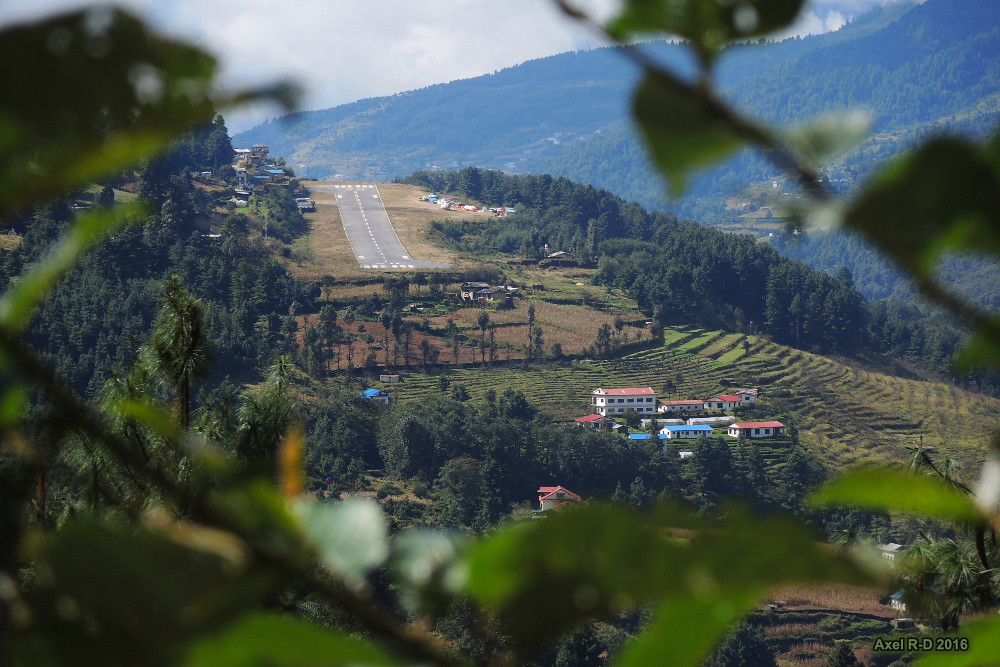
Today we check out of our hotel in Kathmandu and catch a 30-minute internal flight from Kathmandu to Phaplu. You will be awestruck by the magnificence of the mountains you’ll observe from the air before you even ‘hit the ground running’ on this wonderful trek. Following your flight and lunch in the village, in the afternoon, you’ll have the chance to explore this beautiful, remote village and its mountainous surrounds with an option to trek to Chiwang Danda (Hilltop) or Gompa with fabulous views of the mountains.
Included: Internal flight to Phaplu,mountain tea house accommodation (twin share), all meals

We begin the trek early with a steep descent through the pine forest and paddy fields towards Tenkharka. After approximately one hour, we reach the Solu Khola river, from which we follow the newly established road for a little bit, before turning off on a small trail up to the village of Boldok. After a steep climb above Boldok, we’ll enjoy a simple but filling lunch.
From here, the trail continues steeply up through the pine forest. Between the trees you’ll glimpse stunning views of the verdant Phaplu Valley, with Mount Numbur and Gaurishankar – named for the Hindu goddess Gauri and her consort Shankar – to the north. Another 3-4 hours on from the river, our camp site awaits on the top of the ridge, from which you’ll experience your first views of the imposing Everest massif.
Included: Mountain camping (twin share tent), all meals

The following morning, we’ll rise early to catch the first morning rays as they kiss the Himalayas. Enjoy tea and coffee served in your tent as you absorb your stunning surrounds. After a hearty breakfast we begin the day with a gradual ascent along the ridge, passing through more pine forest interspersed with rhododendron and open meadows.
We arrive at camp early in the afternoon, at a site used by local herders to shelter during the evenings. There are a few dried-out lakes in the area, which hold water only during the monsoon season. Together we’ll enjoy lunch in camp, though light snacks will be provided on the way. Spend the afternoon exploring the area, reading a book, or perhaps lend a hand preparing the campfire – the quicker we can get that set up, the more pleasant our evening will be!
Included: Mountain camping (twin share tent), all meals
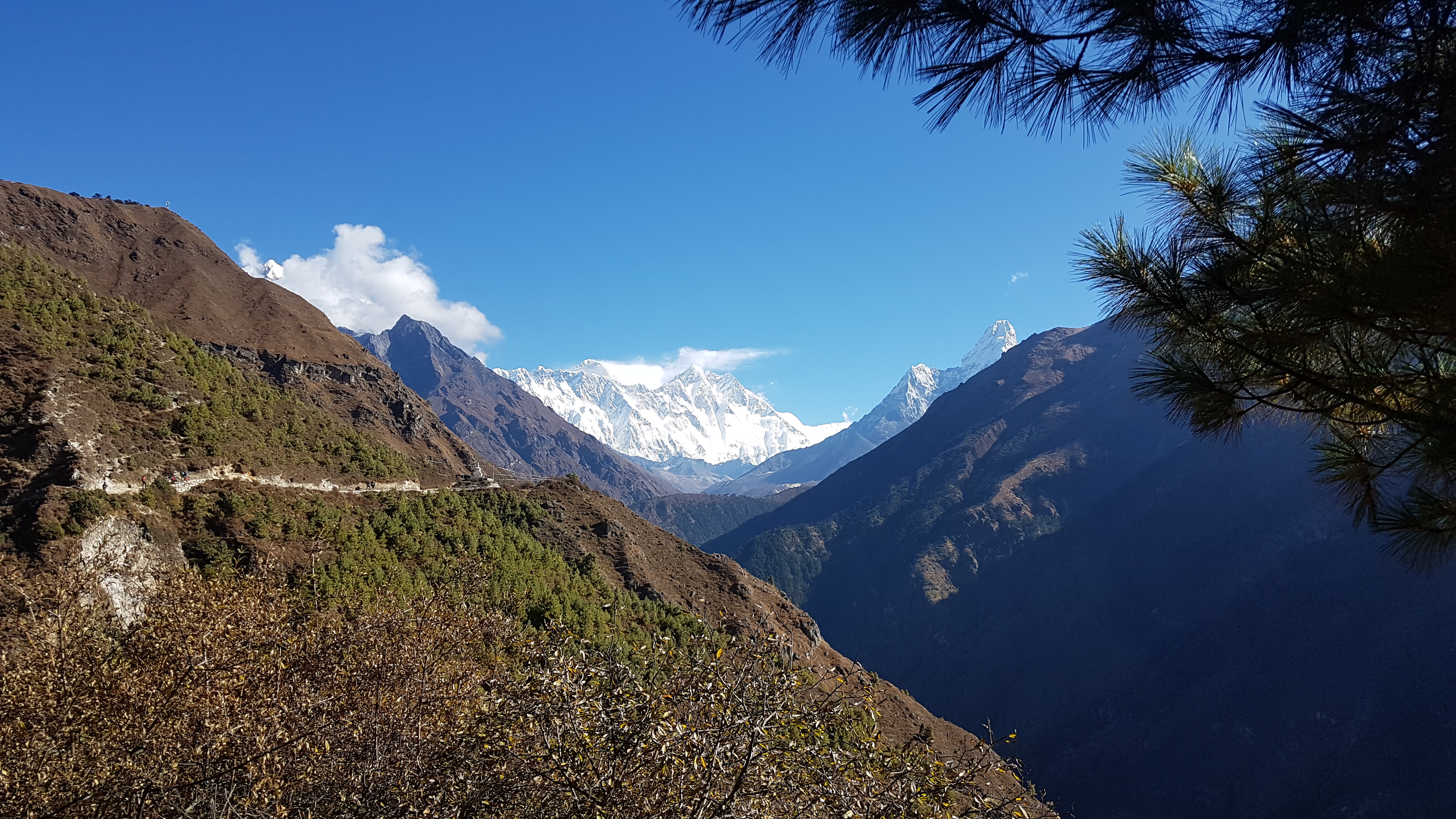
Next morning, we begin our ascent of Pikey Peak along a wide trail of stone steps. While an easy path, it’s likely you’ll be experiencing the effects of the altitude here which may slow you down a little. Rest assured, we’ll take plenty of small breaks on the way to catch our breath and to allow us to enjoy the panoramic views of Mount Everest and Lhotse, as well as Makalu and Kanchenjunga to the east, among other iconic peaks. After witnessing these stunning views of the Himalayas, we start the descent towards Jase Bhanjyang.
Our camp for the night is located at an altitude of 3,500 meters on the side of the mountain, where a big meadow provides a beautiful space for our tents, with the surrounding green forest protecting us from the wind – a superb place to light up a campfire and share epic travel stories with one another.
Included: Mountain camping (twin share tent), all meals
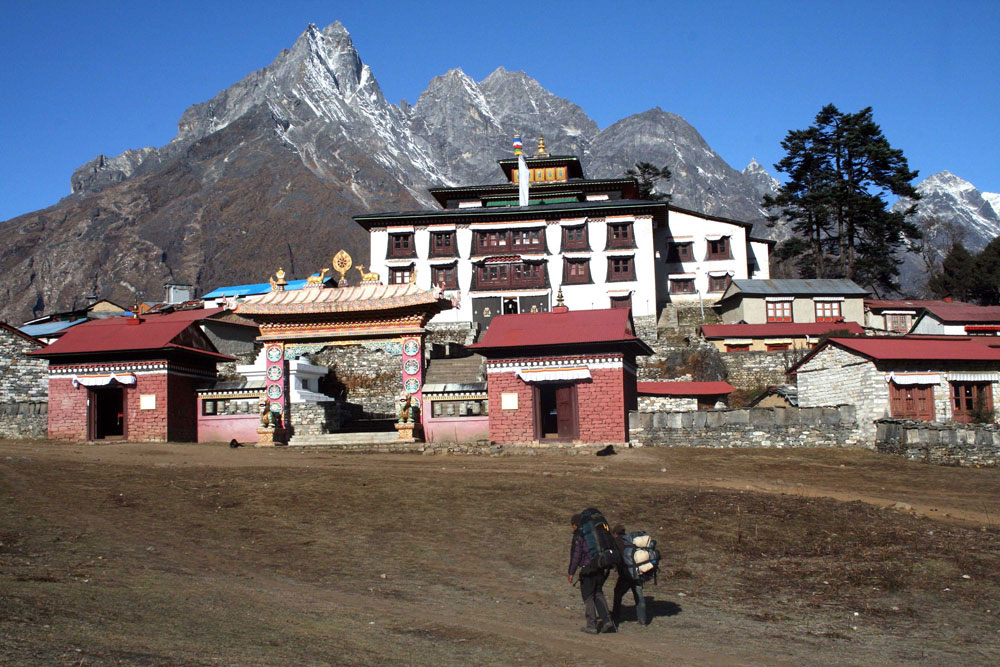
Today we walk a beautiful forest trail from Panbu Danda (hill-side) to Taktor. The trail from Taktor to the riverside camp (around an hour’s walk) is a part of the road, but vehicles run very infrequently here. After reaching the camp site, we encourage you to visit the Thupten Chöling Monastery, around 1.2-2 hours’ walk away. This gompa is one of the largest in the Everest region, and is home to a small community of all-female Buddhist disciples.
Included: Mountain camping (twin share tent), all meals
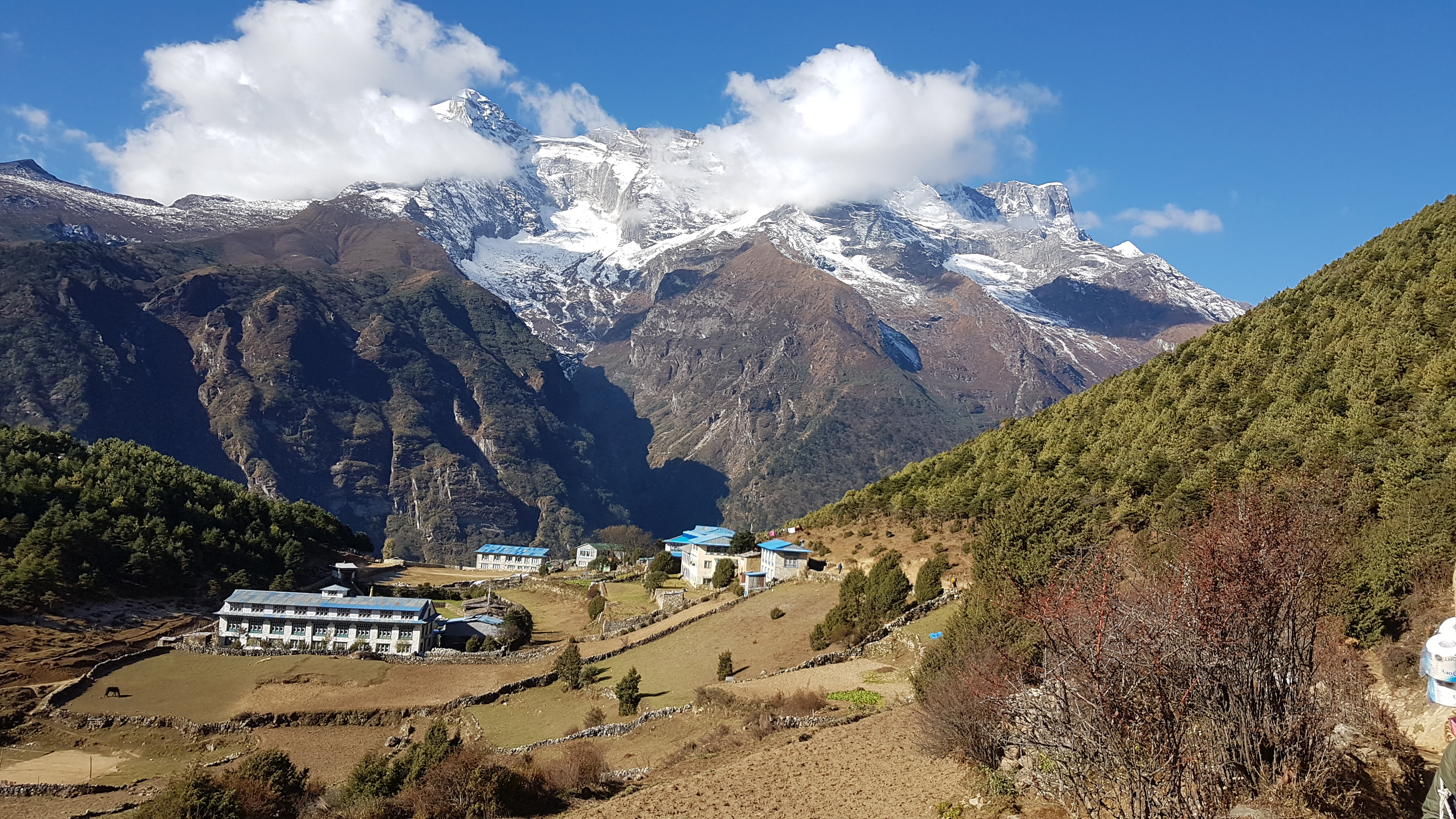
Enjoy one of the main viewing spots from the campsite, as well as a viewpoint of Simi Danda nearby, from where – good weather permitting! – you can take in a vista of Mount Everest and other local peaks. Take a moment while here to visit the local cheese factory in Ringmu, and taste the local cheese and cow and yak milk – you won’t be disappointed!
Included: Mountain camping (twin share tent), all meals
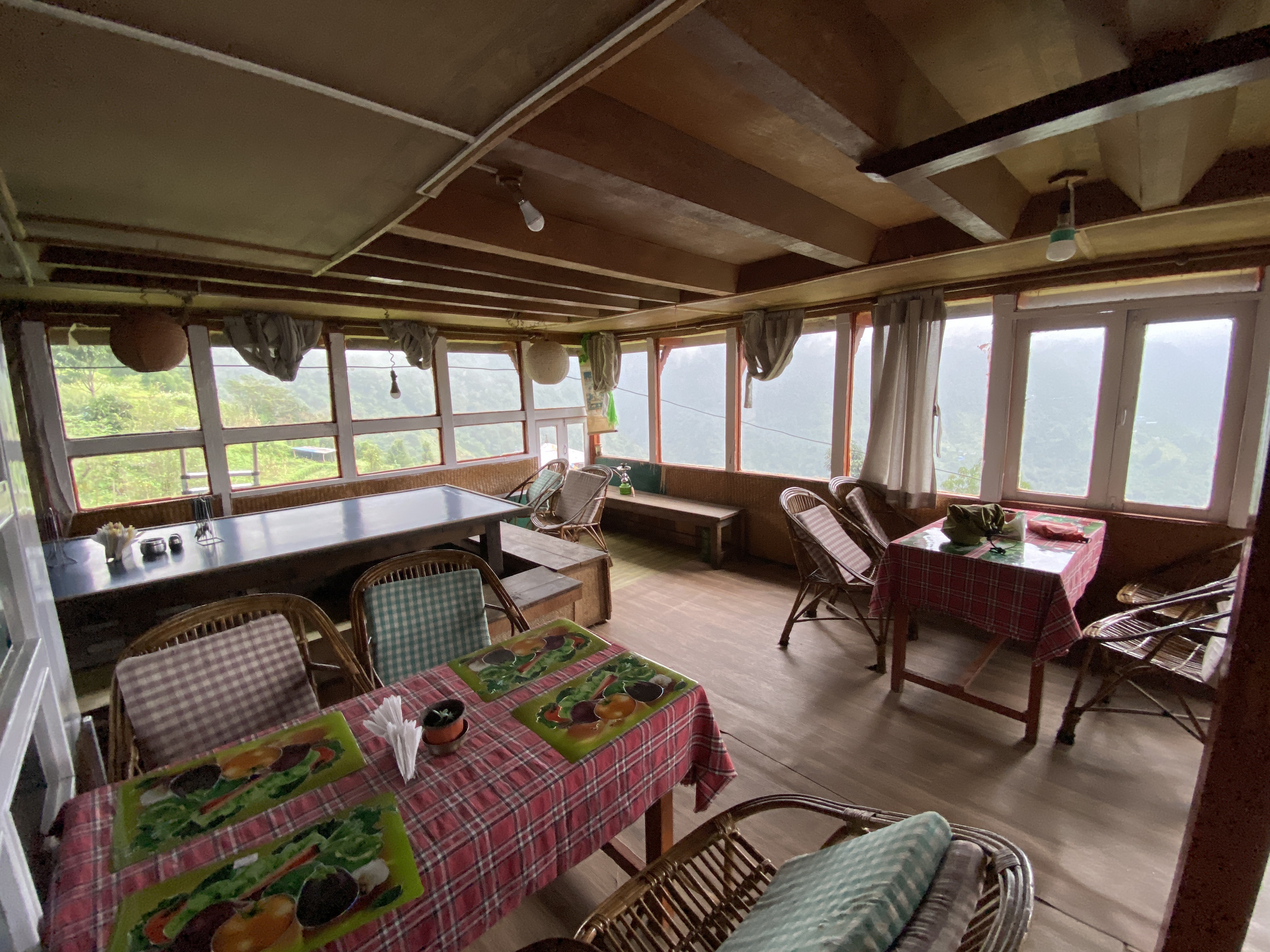
Today we trek from Ringmu camp back to Phaplu along a relatively easy village trail. After reaching Phaplu, we invite you to visit the Salleri market – known as the capital of Solukhumbu and a true melting pot of diverse local peoples and cultures – which is approximately a 2-3 hour return walk.
Included: Mountain tea house accommodation (twin share), all meals
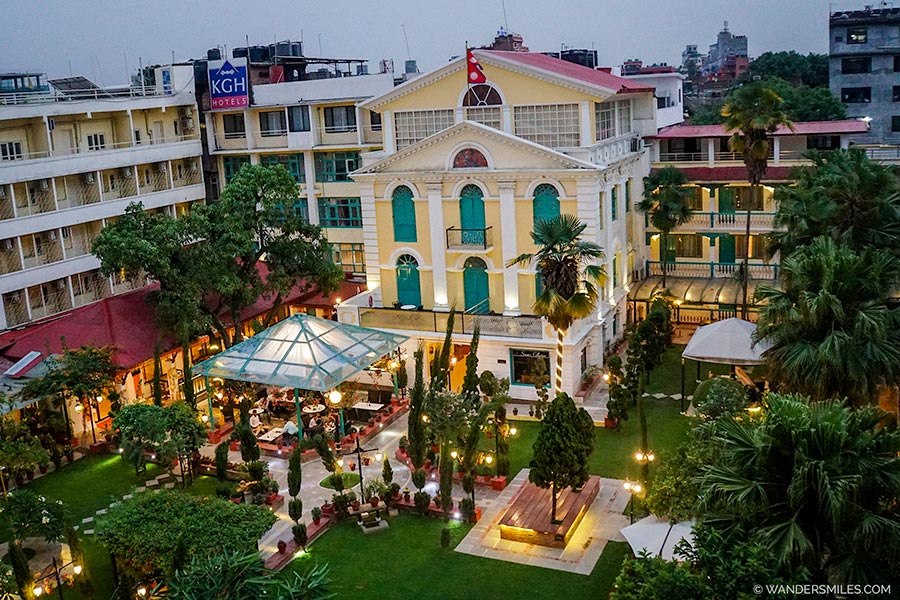
After breakfast, we fly back to Kathmandu. Please note that due to the high variability in weather conditions, it’s best to fly home 1-2 days post trek to allow for any changes in the trip itinerary.
Included: Hotel in Kathmandu (private room) with breakfast and farewell dinner with drinks
This is your last day in Nepal, if you choose. While our scheduled trekking has come to an end, you may decide to increase your stay in Nepal, venture on another trek, or rest in Kathmandu for a few more days. Whatever you choose to do, you’ll be left with a sense of accomplishment and community, and a lifetime of memories from your time visiting the roof of the world with likeminded, adventurous souls.
Included: Hotel breakfast. Those women departing by aircraft will be transferred to the airport.
Every Nepal trip is given a different grading depending on the terrain, length of trip and altitude. The Everest Foothills Camping Trek is graded Moderate with a day graded Challenging (day 7) as we may be trekking up up to 7+ hours. You will need an good level of fitness and in great health to be prepared for your trek.
Difficulty is a relative term, and adventure is a state of mind. For some women, one of our moderate trips may be simple, while for other it may be a terrifying, life-changing experience. Some of us are used to camping and other note, although the camping is very much taken care of by our great team! This trip will vary between moderate to challenging.
We pace our treks to allow your body to adjust to the change in altitude and will monitor your health and wellbeing throughout your trip.
To help guide you to the most make the most informed decision for your fitness, please see below:
If you’re in doubt about whether or not you are able to meet the grade of the trek, we recommend you contact us to discuss further or speak with your doctor for a health check.
Of course! Almost all women attend our trips individually. This trip is a great way to experience Nepal with like-minded women, as the small group sizes and the style of trip bring people together, encouraging new friendships.
Our Nepal treks will appeal to those wanting to push themselves a little further, you will need to be undertaking a regular exercise program 4-5 times per week and have a good level of fitness and health prior to attending. The trek is graded moderate-to-challenging for healthy clients in good physical condition. You can expect to spend up to 5-8 hours trekking each day at a slow pace, on rocky marked and unmarked trails, with some steep inclines and declines. Treks involve carrying a daypack only.
We can’t underestimate how important it is to have a good-to-high level of fitness for the Nepal trek. You’ll be moving for up to 8 hours a day, at altitudes over 4000 metres. Training and preparation are an absolute must.
Fitness and Preparation – A regular fitness program that involves at least 3 to 4 sessions per week of aerobic activity, along with hill walking with a daypack and trekking on uneven surfaces. Walking similar distances to days on your itinerary leading up to your trip will help achieve fitness goals for trips of this nature.
Eating is a big part of travelling. When travelling with Women Want Adventure, you’ll experience the vast array of wonderful food available in the mountain tea houses. Expect a lot of tea – the name ‘tea house’ isn’t misleading! Often the first thing you’ll be greeted with at a tea house is a warm cup of black tea with sugar or ginger tea, great for altitude sickness. If you’re hiking in the rain, snow, or wind it’s the perfect way to relax.
Meals are often cooked over a fire in the small kitchen by the owners. While much of the food is delicious, especially the Nepali staples like momos and dal bhat, the quality of the Western-style dishes will vary greatly. Kitchens are not like a Western-style restaurant, with chefs catering for a range of dietary requirements – what is on the menu is the menu. Please note, our treks do not cater for specific dietary needs, and it’s best to contact us to talk through any requirements prior to booking. Vegetarians and vegans are well catered for in Nepal.
Here’s a typical list of what you can expect to order in a tea house:
Breakfast
Lunch and dinner
Dessert (included on camping trips)
(rice pudding, chocolate pudding, apple or banana fritters)
Snacks (extra charge at own cost at tea houses)
Help yourself to the generous portions of dal bhat, Nepal’s local dish that literally means “lentils and rice.” Mostly vegetarian, but sometimes served with meat on request, this dish is a daily staple across Nepal, India, and Bangladesh: a heavy lentil-based soup eaten with rice, curry, veggies and spices that locals will eat at least once a day. Seriously.
We highly advise you to stay away from the meat dishes as they might not be fresh and therefore not safe for consumption. According to the religious faiths of the Sherpa people, they are not allowed to slaughter in the mountains, so all the meat items are carried up to the tea houses on foot, often over many days! If the tea house is understaffed, or there is an abundance of trekkers, guides and porters will often hop in the kitchen to lend a hand. You are not expected to help, and are kindly advised not to.
Crisp glacial streams in the mountains aside, it won’t take you long to realise that the overall water quality in Nepal (particularly in Kathmandu) isn’t the greatest. Using it to shower is totally fine (keep your mouth closed), but be warned that the water from the tap can be a funny colour and often smells… different. Tap water and river water in Nepal is unsafe to drink. You will have a choice between bottled water, purification tablets (please ensure you pack some), or boiling water. When brushing your teeth, do not use tap water.
There’s nothing worse than trying to adventure when you have Nepal-belly (trust us, we’ve been there), so be safe and take extra precautions. Most trekking paths will have clean water tanks, but we recommend still investing in a water purification and filtration bottle — we use The Grayl GEOPRESS, which is hands-down the best travel-related investment we’ve ever made, and means we can drink the tap water anywhere we go – including India! Alternatively, bring along some water purification tablets or a SteriPen to drop into your bottle on the hiking trails just to be safe.
Drinking sufficient amounts of water in Nepal is essential to avoid the risk of dehydration, so if you follow the steps carefully, you should be safe for your trip. Please note, buying bottled water from villages is not included in your trip price. Please bring additional cash with you.
Tip: We recommend bringing electrolytes with you to keep hydrated throughout the days trekking.
We recommend checking out the country specific information by checking out this website here. Please also read information for guidlines travelling to Nepal related to Covid 19 be clicking here. We also suggest you consult with your nurse/travel doctor.
Altitude sickness can affect anyone, regardless of age, trekking experience or level of fitness. It’s one of the top concerns people share about trekking Nepal and it’s a valid one. Unless you live at a very high altitude, our bodies are not acclimatised to the lack of oxygen in the high mountain air. Ascending too fast can cause problems. If symptoms of altitude sickness in Nepal (or anywhere else) are not addressed quickly, they can be extremely dangerous.
All our itineraries allow enough time for you to safely acclimatise. However, there are also things that you can do to support your own acclimatisation. If you know what symptoms to look out for, you can act quickly with the help of your trekking guide.
Altitude sickness, also called Acute Mountain Sickness (AMS), makes it difficult for oxygen to enter your body (vascular system) due to the low air pressure. The higher the altitude, the harder it is to get the amount of oxygen you need.
Altitude sickness can occur when you ascend to a high altitude too quickly. It’s more likely to affect people above 2,500m/8,200ft. Most of our treks climb to at least 4,000m/13,000ft, so there’s an element of risk.
Please download the Nepal Essentials Information PDF on this booking page for more information.
Sorry! Women Want Adventure does not arrange flights to or from Kathmandu. We do arrange any internal flights depending on the trip you have booked. Please see your itinerary for further details.
Comprehensive Travel Insurance is a mandatory requirement for attendance on all our Nepal trips. The cost of medical, helicopter evacuation and/or hospital care can be very expensive. Your insurance policy should cover cancellation and curtailment, baggage loss or damage, emergency travel, repatriation, personal accident and evacuation from a remote area. It is your responsibility to ensure that you are fully insured before leaving home. Please send us your travel insurance number prior to departure.
Women Want Adventure is not liable for any cost or loss, directly or indirectly, from any personal disruption due to illness and COVID-19. Such costs or losses include but are not limited to: requirements to follow COVID-19 mandates, flights, accommodation, transfers, and other expenses incurred over and above the trip price. Once your trip has commenced there is no refund available for any portion due under any circumstances.
Please ensure that your travel insurance covers you for treks at high altitudes in Nepal, such as over 3000m. It's important to note that some insurance companies may not provide coverage for hikes over 3000m, so it's crucial to check the policy details carefully before purchasing.
You must provide evidence to Women Want Adventure that you have obtained the required personal travel insurance covering all of the activities you expect to participate in 70 days prior to trip departure.
There is a weight restriction on the flight to and from Phaplu of 10kg checked baggage plus 5kg hand luggage. It is not a problem for you to check in 1-2kg more than this as long as you are happy to pay an excess luggage charge (approx. $2per kg). You will only need to check in your day pack, and our porters and team will have all camping gear at the location for the start of they trek they kindly carry.
Items can be left at Kathmandu Guest House accommodation not needed on your trek. Our team will outline this at the trip briefing. This trip also includes one porter for every two trekkers. Porters will carry up to 20-25kg of gear so your overnight bags and spare clothes will be transported for you (maximum 13kg per person). You will only need to carry a ‘day pack’ with essentials in (extra layer, snacks, water, suncream, camera etc.). The less non essential items you bring, the better. Please check out the packing list provided for what to bring with you.
For current advice, visit the Smart Traveller website here.
Tribhuvan International Airport is the only international airport of Nepal. On arrival, the visa procedure is generally very quick and simple. You can expect some queues during peak tourist season, but if you wish to skip those queues, you can also consider getting a visa from the Nepalese Diplomatic Embassy in Australia prior to your arrival.
Please ensure that your passport is valid for 6 months after your return date from Nepal or you may be refused boarding your international flight to Nepal and restricted from gaining an entry visa. It is also important to bring 2-3 passport-size photographs with a light background which are often used for permits, SIM cards, flights etc. Visas can be obtained only through payment of cash in the following currencies: Euro, Swiss Franc, Pound Sterling, US dollar, Australian dollar, Canadian dollar, Chinese RMB, Hong-kong dollar, Singapore dollar and Japanese Yen.
You must pay in cash, and costs are AUD 40 for 15 days, AUD 60 for 30 days, and AUD 150 for 3 months. Credit cards, Indian currency or Nepalese currency are not accepted for visa fee payments.
To ensure a smooth arrival, please withdraw cash prior to arrival at the airport. If you wish to extend your stay, you can extend your visa at the Department of Immigration in Kathmandu and Pokhara offices for total of 120 days. Before arrival, you must complete the online application form by visiting online.nepalimmigration.gov.np/tourist-visa
We work with some of the best local Nepalese guides in the industry we personally met when preparing this trip. We learned about their villages, families, where their kids go to school and the positive impacts guiding has for their village.
Every single one of them is government licensed and very experienced. Our treks are led by English-speaking local guides, as exploring in the company of a local is one of the best ways to really discover the culture, heritage and everyday life of a new destination.
You will also be led by a Women Want Adventure guide who is qualified in all aspects of outdoor leadership, and who is there to enhance your Nepal experience by sharing their tips, knowledge and passion for adventure. In destinations with limited tourist infrastructure and villages in remotes regions, both your guides will be there to assist you.
Collectively, our local and team guides represent an enormous fund of knowledge and experience.
The average age of women attending our trips is 45 years. Ages can range from early 30's to mid 60s. All Women Want Adventure trips are for women over 18 years of age only.
It is customary in Nepal to tip guides and porters. Although it may not be customary to you, it is of considerable significance to the people who will take care of you during your travels. Knowing how to appropriately tip in any country can be tricky, and tipping in Nepal is no exception. There’s no hard and fast rule, so using your discretion is key. For a local guide, if you are trekking solo, $5 a day is appropriate. If you’re in a group, $10 a day is expected. Of course, if you are happy with the service, tipping more is always great and can be discussed amongst the group.
When tipping porters, they usually receive a minimum of $5 a day for treks. Remember, while a guide has more skills and has worked their way up, a porter has to carry a gruelling amount of weight on their back every day. Treat them with the utmost respect, as they are the most wonderful humans with the biggest smiles.
Tipping is usually finalised at the end of the trek and is not part of the tour price. Tipping is arranged by clients and those who wish to participate. It is not compulsory to tip, yet it is the cultural norm. We recommend you bring cash with you on the trek, not only for village purchases (souvenirs or cold drinks) but to pool together tipping cash for guides and porters, post trek.
Winter days in Nepal are generally dry and bright, though at altitude the evenings will be extremely cold, and some high passes can be blocked by snow. Although a high-altitude trek may not be possible, winter can be a great time to visit Nepal, as there are fewer tourists. There are some fantastic walking and trekking holidays which are perfect for an adventurous winter holiday. You could spend Christmas day gazing at a perfect snowy mountain scene!
Spring is a popular time to go trekking in Nepal, as temperatures climb steadily, and the weather tends to be more stable. Trails are more crowded, however, and the skies can be a bit hazy at times. Spring features great festivals, including Holi in March and Nepalese New Year in April. The beautiful rhododendron and magnolia will be in bloom during this time.
Summer in Nepal is monsoon season, bringing hot, humid weather. As a result, most trekking areas tend to experience cloudy skies and rain, and trekkers seeking to experience certain regions of the Himalayas at this time of year, such as Upper Mustang or Nar Phu, are advised to trek in the “rain shadow” of the ranges. Internal flight schedules can be affected, and the mountain views are limited, even if the trails themselves are fine for trekking. The Yarthung Horse Festival takes place in June in Manang, as riders from the entire district and neighbouring Mustang gather to show off their skills.
Autumn is the most popular season for trekking, as the weather is usually stable, with moderate temperatures and clear skies. It does mean however that the crowds are at their largest as well, so bear that in mind. Big festivals like Dashain (October) and Tihar (November) also take place over the autumn period.
Nepal is also a good country for vegans and vegetarians in general. Kathmandu is filled with trendy cafes and restaurants will all sorts of creative takes on international favourites and Nepal food. Tea houses throughout the trek can also cater for vegan/vegetarian as most dishes are vegetarian/vegan based, or you can make them so.
If you are gluten intolerant or celiac, you must inform us upon booking. There is no guarantee on tea house or camping style treks of complete elimination of gluten in regards to cross contamination in tea house kitchen or camping kitchens.
As we are also unable to guarantee a nut-free or allergen-free trip, we strongly encourage clients with severe or life-threating allergies to take all necessary medical precautions and speak with your doctor. Clients trekking with us with allergies must inform us prior to departure on a medical form and carry all necessary medications for allergies, including be capable of self-administration.
Due to weather conditions, sometimes flights in or out of Phaplu are delayed and you may have to wait 1-2 days for another flight. We strongly recommend you allow 1-2 couple of days on the back end of your trip to allow for such changes. There are plenty of things to do in Kathmandu or Lukla and as a group, your guides will assist you with logistics, such as your accommodation changes in Lukla or Kathmandu.
Of course. Please carefully read our detailed terms and conditions policy here. Do not hesitate to contact us with any questions.
Your trip covers most costs for meals, permits and accommodation. However, we recommend you bring cash with you for additional luxury items not covered in your trip cost. How much cash you bring with you on your trek will depend on your spending, however we recommend you have enough for buying cold drinks, sweets or souvenirs (not included in your trip), or alcohol at the tea houses. You may also wish to buy additional meals or food – we recommend that between 10,000-15,000 Rupee would be suitable.
Tea houses will either have Western-style (sit down) toilets or the more traditional squat toilets found across Nepal. You never know which one you’re going to get, but the higher up you trek, it’s more likely to be the latter. Make sure to bring enough toilet paper for your entire trek and always have hand sanitiser nearby. Small tissue packets are also highly recommended. We advise bringing zip-lock bags for any sanitary items, that you can place in the zip-lock and dispose of in a bin. As most villages do not have a sewage system, you will not be able to place your tissues and toilet paper down the toilet. A small bin is provided for loo paper next to the toilet.
As for showers, they’re generally only available at the lower elevation tea houses and hot water is not always a guarantee. Wet wipes are your friend! Showers are usually taken with a bucket where you stand in a tub and pour water over yourself.
For camping style trips, there may be 2-3 days you will go without a shower. At higher altitude, Porters need to carry water 1-2 hours in for every trekker to have a wash. That’s a lot of heavy water! Getting a little smelly is all part of the experience. Where we can, we will carry water into camp for a quick wash. There will always be plenty of drinking water available.
Tip: A small face-mist is a great way to feel refreshed at the end of the day. We recommend bringing some with you.
-10 degree sleeping bags are recommended for spring and autumn (light weighted). Please let us know if you're going to bring your own sleeping bag. Otherwise provided.
Please download the Essentials Information PDF on this booking page for all information. If you still have a question, please dont hesitate to contact our team here.
Nepal: The Ultimate Adventure Destination - As Told by Women Want Adventure
“Hello, it's Monique from Women Want Adventure here and let me tell you, Nepal is the BOMB.com! I spent 7 whole weeks in Nepal last year, trekking amongst the towering mountains, and let me tell you, it was a total BLAST! Nepal is like a wild and crazy rollercoaster ride, full of surprises and beauty around every corner. The people are so warm and friendly, it's like one big hug fest. And don't even get me started on the momo’s, they are delicious! So if you're looking for an adventure that will knock your socks off and leave you wanting more, Nepal is the place to be. Trust me, I know from experience. So pack your bags and get ready for an adventure of EPIC proportions! I’ll be over their guiding with the team so hope to see you there!”
© Copyright 2024 Women Want Adventure. All rights reserved.
Made with by SiteSuite in Sydney